The notion of heritage
The city endorsed the general definition of heritage that was produced by the Conseil du patrimoine de Montréal and that appears in the Énoncé d’orientation pur une politique du patrimoine (heritage policy directional statement).
Heritage means any asset or group of assets, natural or cultural, tangible or intangible, that a community recognizes for its value as a witness to history and memory, while emphasizing the need to safeguard, to protect, to adopt, to promote and to disseminate such heritage.
Montréal’s Heritage Policy takes into account natural, tangible and intangible cultural heritage, or in other words, all aspects of heritage as defined by UNESCO. The Policy thus subscribes to the major international principles employed in classifying heritage. These principles have been tailored to Montréal’s particular situation, as well as to the context of the municipality’s jurisdiction in order to ensure a practical implementation of the Policy, which covers the following kinds of heritage:
Natural heritage | Tangible cultural heritage | Intangible cultural heritage
Natural heritage
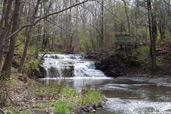 Primarily consists of natural systems and sites, ecoterritories, and riparian and aquatic environments. It includes Montreal's major physical, biological and hydrographical formations, as well as natural environments, thereby ensuring a balance for the plants and animals living in an urban setting.
Primarily consists of natural systems and sites, ecoterritories, and riparian and aquatic environments. It includes Montreal's major physical, biological and hydrographical formations, as well as natural environments, thereby ensuring a balance for the plants and animals living in an urban setting.
Natural heritage | Tangible cultural heritage | Intangible cultural heritage
Tangible cultural heritage
Public art
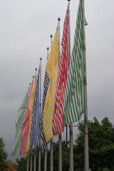 Includes all works of art work located in urban settings, such as public squares and parks, as well as work integrated into street furniture, buildings and landscaping. Such works consist primarily of sculptures, monuments, murals and landscape features
Includes all works of art work located in urban settings, such as public squares and parks, as well as work integrated into street furniture, buildings and landscaping. Such works consist primarily of sculptures, monuments, murals and landscape features
Archaeological heritage
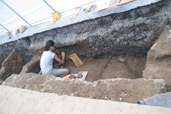 Includes layers of soil, remnants, unearthed artefacts and all other traces of human existence from sites in which human activities have been conducted. Such sites include structures, constructions, groups of buildings and developed areas, along with their surroundings and any artefacts associated with them.
Includes layers of soil, remnants, unearthed artefacts and all other traces of human existence from sites in which human activities have been conducted. Such sites include structures, constructions, groups of buildings and developed areas, along with their surroundings and any artefacts associated with them.
Archival heritage
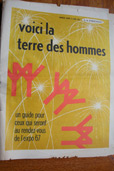 Includes plans, photographs, films, sound and computer recordings and written documents attesting to creations by a large number of people and institutions that have been active in Montreal. It comprises the documents produced or received by individuals or organizations for meeting their needs and for carrying out their activities, that were preserved for the general information such documents provide.
Includes plans, photographs, films, sound and computer recordings and written documents attesting to creations by a large number of people and institutions that have been active in Montreal. It comprises the documents produced or received by individuals or organizations for meeting their needs and for carrying out their activities, that were preserved for the general information such documents provide.
Built heritage
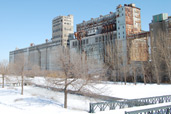 Includes different urban structures and components of these structures that are typical of Montreal, such as the network of roads, infrastructure and other components that contribute to structure the public domain, buildings and building complexes, and the distinguishing features of these sites and the various ways in which they fit into the landscape. Built heritage also includes different kinds of properties which relate to lifestyles or to specific uses within a given socio-historical context.
Includes different urban structures and components of these structures that are typical of Montreal, such as the network of roads, infrastructure and other components that contribute to structure the public domain, buildings and building complexes, and the distinguishing features of these sites and the various ways in which they fit into the landscape. Built heritage also includes different kinds of properties which relate to lifestyles or to specific uses within a given socio-historical context.
Movable heritage
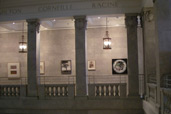 Includes municipal collections that are artistic, archaeological, documentary, ethno-historical and scientific in nature. The category includes creative works, along with archaeological artefacts, plant and animal specimens and corporate, industrial and street furniture.
Includes municipal collections that are artistic, archaeological, documentary, ethno-historical and scientific in nature. The category includes creative works, along with archaeological artefacts, plant and animal specimens and corporate, industrial and street furniture.
Landscaped heritage
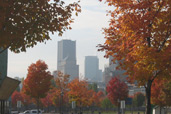 Includes developed sites and complexes such as parks, squares and public or private gardens, prominent trees and shorelines. Such features, along with those contained in Montreal's natural, built and archaeological heritages, define the city's landscapes. These productions are the result of the combined works of nature, human beings and the achievements of certain renowned designers, and are based on a concept of landscape that comprises notions of nature and of culture, as well as the manner in which a community perceives, characterizes and identifies itself with its living space.
Includes developed sites and complexes such as parks, squares and public or private gardens, prominent trees and shorelines. Such features, along with those contained in Montreal's natural, built and archaeological heritages, define the city's landscapes. These productions are the result of the combined works of nature, human beings and the achievements of certain renowned designers, and are based on a concept of landscape that comprises notions of nature and of culture, as well as the manner in which a community perceives, characterizes and identifies itself with its living space.
Natural heritage | Tangible cultural heritage | Intangible cultural heritage
Intangible cultural heritage
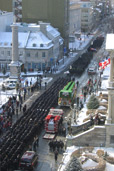 Includes a body of creations, knowledge, know-how, practices, arts and extant popular traditions that pertain to any aspect of our social lives, as well as to the toots, objects or artefacts associated with them. Intangible heritage is borne in the collective memory and is handed down primarily from generation to generation through the processes of learning, observation and imitation. This form of heritage serves as a source of cultural endeavours, marks the city's identity, is preserved and is shared by a range of communities and socio-economic groups and is often referred to as "living heritage."
Includes a body of creations, knowledge, know-how, practices, arts and extant popular traditions that pertain to any aspect of our social lives, as well as to the toots, objects or artefacts associated with them. Intangible heritage is borne in the collective memory and is handed down primarily from generation to generation through the processes of learning, observation and imitation. This form of heritage serves as a source of cultural endeavours, marks the city's identity, is preserved and is shared by a range of communities and socio-economic groups and is often referred to as "living heritage."